Django Tutorial
Django Tutorial: A Comprehensive Guide to Mastering the Python Web Framework
The Python web framework Django is a powerful tool that can help you create complex, feature-rich web applications. With Django, you can quickly create complex web applications with minimal effort. This Django tutorial will guide you through all the steps necessary to master the Python web framework.What Is Django?
Django is a web framework written in Python. It is designed to simplify the process of creating complex web applications. It is an open source project, maintained by the Django Software Foundation. Django provides a comprehensive set of tools and libraries that allow developers to create web applications quickly and easily.What Are the Benefits of Using Django?
Django provides developers with a wide range of benefits, including:- Ease of use - Django is designed to be easy to use, with a straightforward syntax and intuitive structure.
- Flexibility - Django is highly customizable, allowing developers to easily adapt it to their specific needs.
- Security - Django is designed with security in mind, offering a range of features to help keep your application safe and secure.
- Scalability - Django is designed to be highly scalable, allowing developers to easily add more functionality and features as their application grows.
Getting Started With Django
Before you can start using Django, you need to install it. First, you need to make sure you have Python installed. You can download the latest version of Python from the Python website. Once you have Python installed, you can install Django using the command line. Once you have Django installed, you can create a project. To create a project, you need to use the command line to navigate to the directory where you want to create the project and then run the command:django-admin startproject project_name
This will create the project structure and some basic files. You can also create an app by running the command:
python manage.py startapp app_name
This will create the necessary files and folders for your app.
Django Models, Views, and Templates
Now that you have a basic project structure, you can start building your application. Django uses the Model-View-Template (MVT) architectural pattern. This pattern separates the application into three parts: models, views, and templates.Models
Models are the data layer of your application. They contain the data that your application needs to store and retrieve. Models are typically written in Python and stored in the database.Views
Views are the logic layer of your application. They are responsible for handling requests from the user and returning a response. Views are typically written in Python and stored in the codebase.Templates
Templates are the presentation layer of your application. They are responsible for generating the HTML that is sent back to the user. Templates are typically written in HTML and stored in the codebase.Django URL Routing
Once you have your models, views, and templates set up, you need to configure the URL routing. This is the process of mapping URLs to views. You can configure the URL routing in the urls.py file.Django Forms
Django also provides a powerful forms library. This library allows you to easily create forms for your application. You can create a form by defining a class in Python and then using the form class in your templates.Django Admin
Django also provides a powerful admin interface. This interface allows you to easily manage your application’s data. You can access the admin interface by navigating to the /admin URL.Conclusion
This Django tutorial has provided you with a comprehensive guide to mastering the Python web framework. With Django, you can quickly create complex web applications with minimal effort. You can use the Model-View-Template architectural pattern to structure your application and you can use the forms library and admin interface to easily manage your application’s data. With this tutorial, you should now have the knowledge and tools necessary to create your own Django applications.Tags

#Django #Python #WebFramework #MVT #Forms #Admin #Tutorial #Guide #Development

Posting Komentar untuk "Django Tutorial"